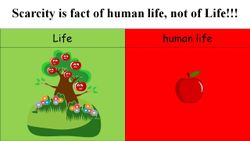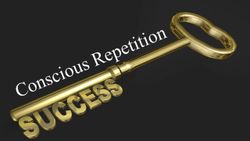Dec 23, 2024
Mind Reset Volume 1

A
1
Have you ever wondered how animals and plants, despite lacking intellect, manage to live in harmony, while we humans—despite achieving so much—struggle to move beyond paychecks and live in constant anxiety? Nature embodies wisdom, not just knowledge. Simply accumulating knowledge is futile unless it’s understood in a way that uplifts everyone it touches.
2
This deeper wisdom allows us to experience the true beauty of nature. Without it, we’re left only to manipulate and exploit, leading to the chaos we see today—a world filled with disorder and unrest, where no one seems truly at peace. Understanding nature might seem challenging, but it’s not as difficult as it appears. Thinking in new ways requires energy simply because it’s unfamiliar. Yes, it takes effort and time to shift our perspective, but believe me, it’s worth it.

B
3
Scarcity is a reality in human life, but not in nature itself. Have you ever noticed how nature thrives in abundance while human civilization seems trapped in scarcity? Take the example of an apple seed: we can count the seeds in an apple, but we can’t fathom the infinite apples one seed can produce. That’s the boundless abundance of nature—beyond comprehension.
4
Yet, we humans, proud of our intellect, focus on measuring and counting finite things, celebrating precision over imagination. We left the forests, built concrete worlds, and created laws and systems, but peace remains elusive. In doing so, we forgot a fundamental truth: though we emerged from nature, separating ourselves from it is impossible. Such disconnection only leads to suffering, discontent, and an untimely demise.
5
Nature’s abundance isn’t accidental—it arises from immutable laws and harmonious order. Human civilization’s laws, however, lack the depth to bring true harmony. As beings born of nature, we cannot escape its laws. Resisting them only creates stress and unhappiness. Instead, embracing these natural laws could free us from the constraints of ego, granting us peace of mind and body.
6
In nature, hunger doesn’t exist as it does in human society. Don’t you think aligning ourselves with nature’s principles could hold the key to ending world hunger? The solution is simple: understand nature’s laws and apply them. So, are you ready to let go of control, follow nature’s lead, and unlock its infinite abundance?

C
7
We have two ears to listen more, two eyes to see more, and one tongue to speak less. But why are we so fascinated by the concept of the third eye? It’s not about the number—it’s about understanding. The third eye is the eye of perception and insight. It’s a reminder that we shouldn’t take everything at face value. Instead, we must look deeper to uncover the truth.
8
Take running water versus stagnant water as an example. Running water is clear, pure, and drinkable, while stagnant water is dirty and a breeding ground for diseases. This seems obvious, right? Yet, we fail to apply this understanding to our lives. For instance, we invest in a water purifier like an RO system but rarely think beyond that to explore the bigger picture. What’s the real takeaway here?
9
Nature constantly reveals its secrets—it’s up to us to observe, reflect, and learn from them. Think of it like riding trends and monetizing them. However, one universal flaw in human civilization is the obsession with the comfort zone. It’s that place where everything feels "settled"—food in the fridge, a roof over your head, and no pressing challenges. While it may seem good, it’s merely a resting place.
10
In nature, there’s no rest. Everything is in motion. Running water is clean and drinkable because it flows, while stagnant water becomes dirty because it stops moving. The same applies to life: when we settle into a comfort zone, we stop growing. Days blend into nights, the calendar changes, but we stay the same. No new goals, no creative pursuits—just stagnation.
11
Meanwhile, nature is always moving forward. Every plant and animal grows stronger and more capable, driven by their instincts. Unlike them, humans don’t rely on instinct—we have something far greater: the power of thought and choice. But when we neglect this ability, we regress. Evidence of this decay is everywhere: stress, frustration, and crises.
12
If nature never rests, then by its laws, there’s no such thing as a comfort zone. You either grow or decay. You either build a legacy or fade into irrelevance. Now think about this: if who you are today remains exactly the same 5, 10, or 40 years from now, isn’t that terrifying? It’s a wake-up call to break free from stagnation and embrace growth—because standing still is just another way of falling behind.

D
13
Order and movement are essential for productivity and growth. When things are organized, we can work efficiently. But when everything is messy—be it our desk, room, or life—it drains our energy before we even begin. Nature, however, operates with flawless precision: day and night, summer and winter, everything flows in perfect harmony. If our surroundings are disorganized, we must clear them immediately, or we risk stagnation—a step backward no one desires.
14
To create order and movement in our lives, we need three key elements: honesty, success, and excellence.
a) Honesty
Start by honestly accepting your present circumstances without judgment. Don’t label them as good or bad—just see them for what they are. Today’s reality is the result of yesterday’s mindset. Likewise, tomorrow’s reality will stem from today’s mindset, which should be built on a solid understanding of nature’s principles, not fleeting motivation. Accepting where you are now is the foundation for growth.
15
b) Success
Success isn’t a destination or a final goal—it’s a continuous process. In nature, nothing truly ends; everything is cyclical. Death, for example, is just a transformation—like water turning into steam. According to the law of conservation of energy, energy is never destroyed, only transformed. Similarly, success isn’t about reaching a specific point but about consistently moving forward.
16
To be successful, you must set and achieve goals continuously. Rest when needed, but never quit. The issue isn’t that people don’t set goals—it’s that they set goals that are too small. Life is a one-time opportunity, so why settle for mediocrity? Set big goals that excite and challenge you. If failure scares you, aim for a goal worth failing for. Such goals bring adventure and growth, and the journey itself becomes rewarding. Remember, goals are for growth; everything else is just a bonus.
17
c)Excellence
Excellence means finishing what you start. While it’s easy to talk about, it’s much harder to practice. Yet, if you make excellence a part of your very being, you become unstoppable—just like nature. Nature never leaves anything incomplete, and neither should you.
✓The Blueprint for a Successful Life
*Be honest with yourself and accept your current reality without judgment.
*Keep moving forward, achieving goals one after the other.
*Set goals that push you beyond your comfort zone and inspire growth.
18
Finish what you start—strive for excellence in everything. This model is rooted in the principles of nature, which never fails. We fail only when we act against nature. By aligning with its laws—embracing order, movement, and growth—we too can become invincible.

E
19
Bruce Lee, the legendary martial artist, was not just an exceptional player but also a profound teacher. He often remarked that most people have a mistaken understanding of martial arts. What they perceive as martial arts is vastly different from its true essence.
20
Whenever a new student came to learn from Bruce Lee, he would take them to a small gym to observe their movements. This helped him gauge their actual level of understanding. After the session, he would set up a simple yet profound demonstration. On a table, he placed two glasses: one filled with clean water and the other with coke. The glass of clean water was on his side, while the coke was in front of the student.
21
Pointing to the glasses, Bruce Lee would say, “This glass of clean water represents my lifelong knowledge of martial arts, while the glass of coke represents your current knowledge.” He would then explain, “If you want to gain my knowledge, you must first empty the glass of coke. Only then can it be filled with clean water. If you don’t, there will be no space for anything new.”
22
This lesson wasn’t just about martial arts; it reflected life itself. Many of us find our lives stagnant or unfulfilled, yet we resist change. Our minds are so cluttered with preconceived notions, ego, and old habits that we leave no room for new learning or growth. If we don’t let go of what no longer serves us, how can we make space for what will transform us?
23
Life isn’t your enemy. It doesn’t seek to judge or punish you. On the contrary, it wants your well-being and is ready to offer happiness and fulfillment. But if you cling to the “coke” of old habits and beliefs, life’s “clean water” can’t help you. Thirst is quenched only by water, not by coke.
24
The question is: will you embrace the water of learning and growth today, or will you wait until it’s too late? Relax, let go of what’s holding you back, and align yourself with the flow of nature. This is the only degree that truly matters—the one awarded by life itself.

F
25
Sidney Herbert Woods proposed a simple yet profound framework for what it truly means to be an educated person. According to him, being educated isn't about degrees or rote learning but about embodying three essential qualities:
a) Welcoming New Ideas
An educated person can entertain new ideas without prejudice or anger. When you encounter new information, how do you respond? Do you immediately reject it, or do you pause, reflect, and discuss it constructively? The ability to entertain new ideas is what fuels growth and innovation.
26
b) Welcoming New People
How do you interact with new people in your life? Are you nervous, or do you approach them with curiosity and openness? The concept of being introverted or extroverted is often overstated. A so-called introvert can thrive in a non-judgmental environment, while an extrovert might retreat in the company of silence lovers. These labels are mere constructs. Building meaningful connections requires good communication skills, which are indispensable for success. No one is truly self-made—every idea needs implementation, and implementation demands collaboration. Communication is an art, and mastering it allows you to create peace, while failure to communicate often leads to conflict.
27
c) Understanding Yourself
The most critical relationship is the one you have with yourself. Are you comfortable in your own company, or do you dread solitude? Many of us chase external noise to avoid facing ourselves, but this avoidance is the root of most problems. Without self-awareness, you can't truly understand others or recognize opportunities. Self-awareness allows you to see the world’s changes in advance, avoid crises, and seize opportunities.
28
The Path to True Education and Success
*An educated person, according to Woods, is someone who:
*Adapts to new ideas with an open and calm mind.
*Builds meaningful connections with others, using empathy and effective communication.
*Knows themselves deeply, which helps them navigate life with clarity and confidence.
Such a person sees life not as a struggle but as a space filled with abundance and possibilities. If you cultivate these three traits, no external force can prevent you from succeeding. The journey starts with understanding and accepting yourself, embracing growth, and fostering authentic connections with the world around you.

G
29
The essence of your thoughts lies in embracing open-mindedness and exploration. Life, after all, is a playground of ideas, and growth begins when we stop seeing things as merely right or wrong. Here's how your thoughts can be summarized into actionable wisdom:
The Law of Polarity
Everything has its opposite—day-night, good-bad, success-failure. Recognizing polarity isn't about choosing one side but understanding that both sides coexist. If something appears flawed, it's because there's potential within it. Growth often lies in the tension between these opposites.
30
The Approach to Ideas
When exposed to new ideas, avoid these three traps:
a) Do not blindly accept. Acceptance without understanding leads to stagnation.
b) Do not outright reject. Rejection without exploration closes doors to possibilities.
c) Do not ignore. Ignorance is a missed opportunity to learn.
Instead, play with ideas. Ask yourself:
"Will this idea improve my life?"
If the answer is yes, take action immediately. Life is short; hesitation only delays your potential.
31
Leap of Faith
Living your best life isn’t about waiting for the perfect moment or the perfect idea. It's about experimenting with what resonates with you and acting on it now. Life is too short for overthinking; it's for living.
By adopting this mindset, you give yourself the freedom to explore, the courage to fail, and the wisdom to succeed. Keep questioning, experimenting, and applying—it’s how life transforms into the masterpiece it’s meant to be.

H
32
The path to change and transformation is indeed a gradual process, not an instant occurrence. Here’s how your thoughts can be distilled into practical guidance for habit formation and life improvement:
Key Principles for Change
a)Habits Are a Journey
Habits, like learning to write as a child, require consistent effort over time. Progress is not about speed but consistency and persistence.
b) Conscious Spaced Repetition
Set aside time daily to revisit and study transformative ideas. Repetition strengthens understanding and builds the foundation for action.
c) Discipline and Patience
New habits depend on your level of discipline and your willingness to commit. While it sounds simple to stay disciplined, it often challenges your current comfort zone.
33
21-Day Framework for Transformation
a) Day 1-7: Awareness & Study
Focus on understanding the new habit or idea. Reflect on how it can improve your life.
b) Day 8-14: Conscious Application
Start applying the concept daily, even if imperfectly. Track your progress and identify challenges.
c) Day 15-21: Integration
Build momentum by refining your practice.
Celebrate small victories and keep reinforcing the habit.
By following this approach with commitment and patience, you’ll experience results that not only bring change but also deeply transform your mindset and actions. Keep moving forward—it’s not easy, but it’s worth it.

I
34
The choice between creation and decay is a pivotal one in shaping your life. Your thoughts highlight the importance of environment and the people we associate with. Let’s break this into actionable steps:
Key Concepts for Change
a) Your Environment Shapes You
Real-World Environment: Surround yourself with people who inspire and challenge you. Seek out those with audacious goals and a forward-thinking mindset.
Virtual Environment: Follow achievers and experts in your field on social media. Engage with content that educates, motivates, and pushes you to grow.
35
b) Goals as Problem-Solving
View every goal as a problem waiting to be solved. The bigger the problem, the greater the reward. Shift your perspective—problems are not obstacles but opportunities to grow and achieve.
36
c) Comfort Zone vs. Growth Zone
The comfort zone offers ease but no progress.Stepping into the growth zone brings challenges but also rewards, transformation, and fulfillment.
37
Steps to Transform Your Environment and Mindset
a)Audit Your Environment
Identify people and activities in your life that are holding you back. Gradually reduce interactions with those who drain your energy or encourage complacency.
b) Seek Out High Achievers
Network with those who are ahead in your field or share your aspirations. Follow them online, study their habits, and implement their strategies in your life.
38
c) Set Goals Aligned with Growth
Identify the problems you’re passionate about solving. Break them into actionable steps and tackle them one by one.
d) Take Immediate Action
Don’t wait for the "perfect time." Start small but start now. Change your virtual environment today—unfollow negativity and subscribe to growth-oriented content.
39
The Decision is Yours
Choose creation: It brings challenges, growth, rewards, and an extraordinary life.
Choose decay: It may feel comfortable, but it leads to stagnation, regret, and unfulfilled potential.
Your move—what will you choose?
Summary: A Blueprint for Growth and Success
1. Clear Your Mental Space
To grow, you must let go of old, limiting beliefs, just as Bruce Lee taught through his analogy of replacing the "coke" in your mind with "clean water." Be open to learning new ideas and applying them without bias.
2. Adopt Nature’s Orderly Model
Nature operates in perfect harmony—day and night, seasons, and cycles. Mimic this by creating order in your life. Accept your current circumstances honestly, set big, growth-oriented goals, and strive for excellence by completing what you start.
3. Redefine Success
Success isn’t a destination but a continuous journey. It’s about setting ambitious goals, achieving them, and moving forward. Always aim higher and embrace failure as part of growth.
4. Cultivate a High-Quality Environment
Surround yourself with inspiring people and high achievers. Avoid negativity, whether from people or social media. Follow those with proven results and learn from them.
5. Master Communication and Connection
True education lies in embracing new ideas, connecting with people easily, and understanding yourself deeply. These skills enable you to communicate effectively, solve problems, and thrive in relationships and life.
6. Understand and Improve Yourself
Spend time with yourself to understand your strengths, weaknesses, and desires. Growth starts from within—self-awareness is the key to unlocking your potential.
7. Build Strong Habits Through Repetition
Change doesn’t happen overnight. Conscious, disciplined repetition over time is necessary to adopt new habits and ideas. Study and practice daily to see lasting results.
8. Step Out of Your Comfort Zone
Growth requires discomfort. While the comfort zone offers ease, it leads to stagnation. Choose the path of challenge, problem-solving, and continuous learning to experience true rewards and fulfillment.
9. Take Immediate Action
Don’t overthink or wait for the perfect moment. Start now by applying what resonates with you. Transform your environment and mindset today.
Core Message
Life is a journey of creation or decay—your choices determine which path you take. Embrace learning, take action, and align with nature's laws to live a life full of growth, success, and abundance. The decision is yours!
By undefined
19 notes ・ 20 views
English
Proficient